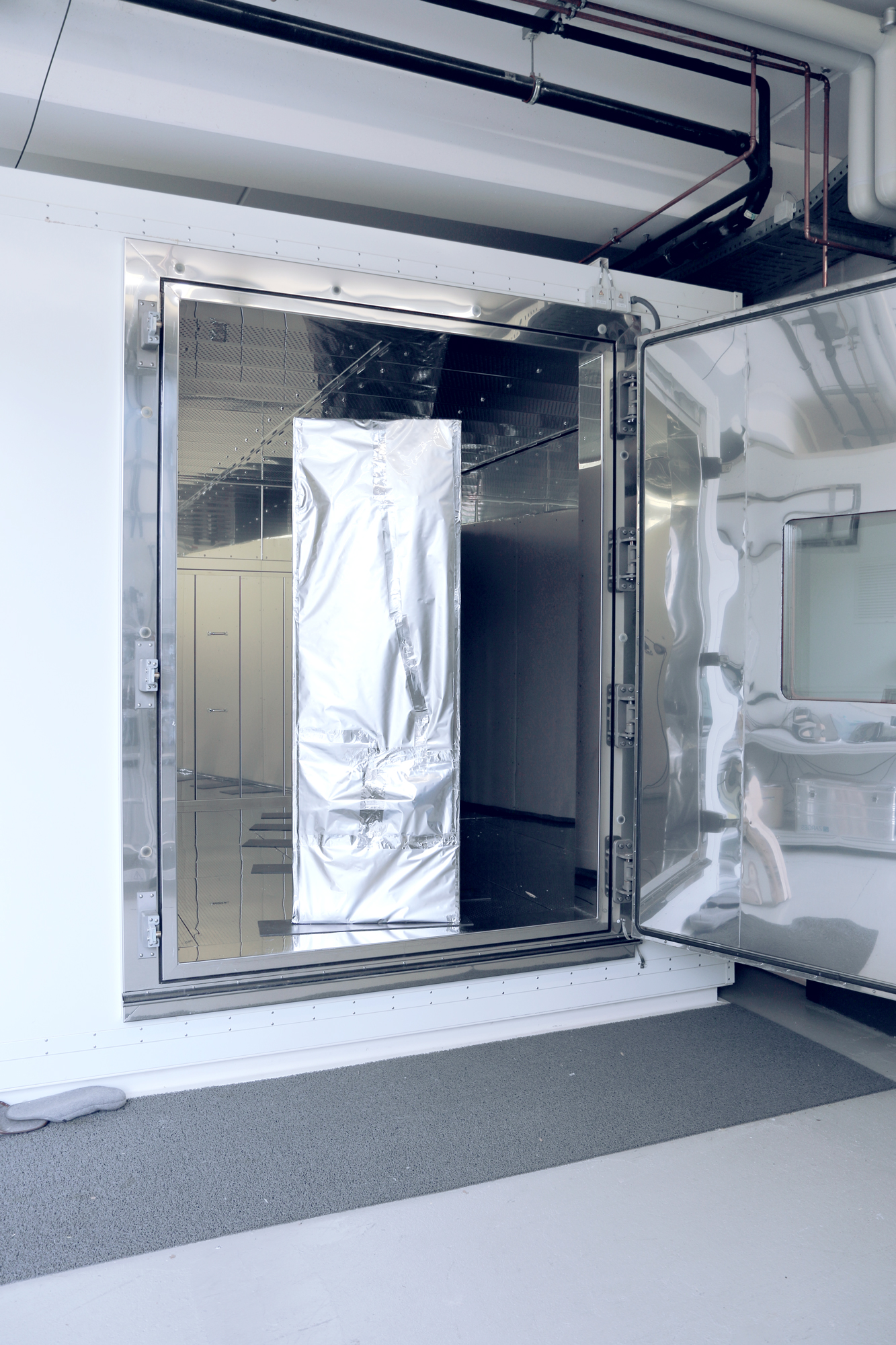Press release
Practical test concerning the significance of emission measurements on components for the quality of indoor air
Researchers from the Fraunhofer WKI and the Thünen Institute of Wood Research have compared emissions from individual building materials with emissions from wall structures and with concentrations of volatile organic compounds in the indoor air of model houses. The result: Even under controlled conditions, emission measurements of individual materials rarely allow statements to be made concerning complete systems such as wall structures, let alone real residential buildings. In principle, however, system tests on entire components in large test chambers are suitable for approximating reality and describing the interactions between the emissions from the materials, thereby taking into account the structure of the construction. The examination of model systems does not, however, make it possible to provide precise information regarding emissions in real living situations, even in the foreseeable future, as the overall situation is significantly influenced by, for example, people and the weather.

With this study, the researchers are reacting to the growing economic interest in the evaluation of emissions from wooden building products. At the Fraunhofer WKI, investigations were carried out on individual building materials and walls built therefrom as examples of systems. The Thünen Institute investigated emissions from building materials in comparison to concentrations in model houses.
“We were able to determine that the influence of the emission rates of individual materials on the concentrations actually found in the indoor air is very complex,” summarized Dr. Jan Gunschera, Project Manager at the Fraunhofer WKI. Fundamentally, the emission measurement of individual products contributes towards the compliance with minimum requirements. The utilization of tested emission-controlled products therefore has an overall positive effect on the quality of indoor air. “The situation in real rooms is, however, so complex that we cannot draw any quantitative conclusions concerning the quality of the indoor air simply by measuring individual materials, as the materials interact with one another. System tests of entire components in test chambers require, in turn, a great deal of experimental effort, and with model houses, we can represent reality to only a limited extent,” explained Dr. Gunschera.
Real exposure under residential conditions can, however, only be assessed through local indoor-air measurements. If defects are identified, they can be retrospectively traced by means of system and material investigations. Emission measurements in test chambers are a proven method hereby. At the Fraunhofer WKI, investigations of systems - i.e. entire walls or the complete furniture and furnishings of a living room - are possible, as the institute possesses test chambers of up to 48 m³ in size.
“Through such measurements and subsequent comparison with room-air measurements in model houses, it could be shown that the weather influences concentrations of emitted compounds indoors.. We are therefore of the opinion that this aspect should be investigated more intensively in the future. With the aid of test chambers in which diverse climatic conditions can be simulated, the Fraunhofer WKI could make a valuable contribution towards this,” said Dr. Gunschera.
The investigations are an important first step towards making material, system and model measurements more practicable. The German Federal Ministry of Food and Agriculture supported the project via the project management agency Fachagentur Nachwachsende Rohstoffe e. V. (FNR).
Last modified:
 Fraunhofer Institute for Wood Research
Fraunhofer Institute for Wood Research